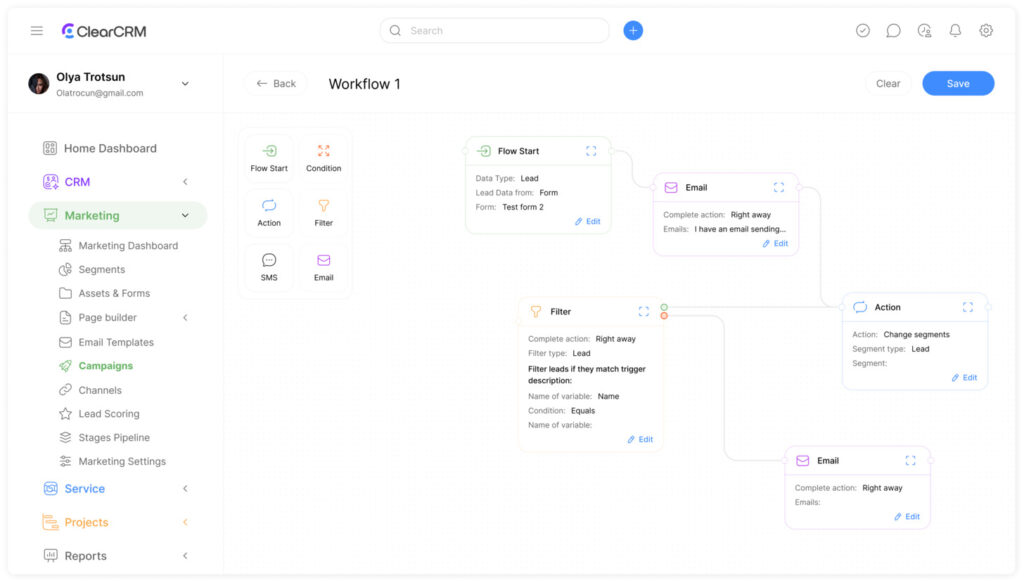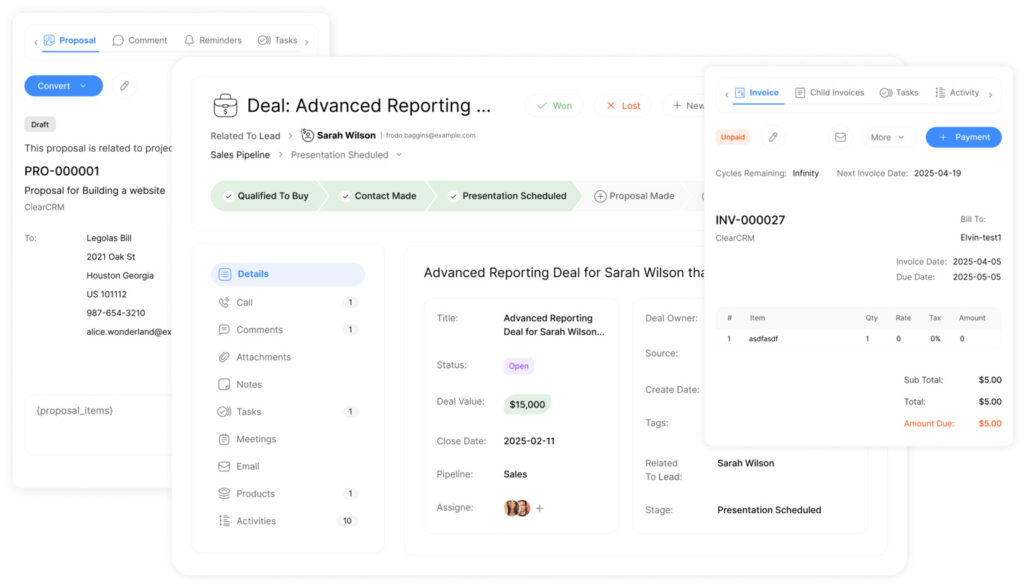Project Template: Real Estate Listing Workflow Template

Did you know 70% of property sales take over six months to close? For agents juggling mountains of paperwork, client negotiations, and compliance checks, this timeline often stretches to a year. Managing these tasks without a clear system leads to missed deadlines, lost deals, and burnout.
Professionals in this field spend 40% of their workweek on administrative duties instead of client-facing activities. Legal document preparation alone consumes 15 hours monthly per transaction. Without organized processes, critical details slip through the cracks, risking compliance violations.
Key Takeaways
- Complex sales cycles demand structured systems to track multi-stage transactions
- Centralized document management prevents compliance risks and missed deadlines
- Automated task prioritization frees 20+ hours monthly for revenue-focused work
- Client communication timelines adapt to individual deal progression rates
- Customizable checklists maintain consistency across simultaneous transactions
This framework eliminates manual tracking through phase-specific automation. Agents gain real-time visibility into each deal’s status while maintaining personalized client interactions. Built-in audit trails ensure all legal requirements get addressed before closing dates.
By standardizing repetitive tasks, professionals reduce onboarding time for new team members by 65%. The system scales seamlessly whether managing three listings or thirty, preventing overwhelm during market surges. Financial tracking integrations automatically update profit projections as deals evolve.
Introduction: Enhancing Productivity in Real Estate
Agents spend 40% of their workweek handling administrative tasks rather than closing deals—a drain on productivity and revenue potential. Property professionals juggle 12+ daily responsibilities, from coordinating showings to analyzing market trends. Without strategic systems, critical activities like client follow-ups or listing updates fall through the cracks during peak seasons.
Overview of Industry Efficiency
Centralized management tools transform how teams operate. By consolidating communications, document creation, and scheduling into one platform, professionals reduce redundant efforts. Automated alerts for deadline-sensitive tasks like contract renewals ensure compliance while freeing mental bandwidth.
Benefits of Structured Systems
Adopting standardized processes cuts response times by 35% and boosts client retention rates. Teams report reclaiming 18+ hours monthly through automated reminders for appointments and follow-ups. Consistent workflows also minimize errors in legal paperwork—a common pain point during high-stakes negotiations.
Clients notice the difference when agents prioritize relationship-building over administrative chaos. Fewer missed calls and faster updates build trust, directly influencing deal success rates. Efficiency isn’t just about speed—it’s about creating space for strategic growth in competitive markets.
Understanding the Role of a Real Estate Agent in Listing Workflows

Property advisors navigate intricate processes that demand precision and proactive communication. Their expertise bridges legal requirements, market dynamics, and client expectations—transforming chaotic deals into structured successes.
Organizing Critical Paperwork
Professionals handle over 20 document types per transaction, from purchase agreements to inspection reports. Automated filing systems reduce errors by 47% compared to manual methods. Key tasks include:
- Drafting legally binding contracts with customizable clauses
- Tracking revision histories across multiple stakeholders
- Securing digital signatures for faster approvals
| Task | Traditional Approach | Optimized Method |
|---|---|---|
| Contract Preparation | 4-6 hours per draft | 1-hour templates |
| Compliance Checks | Manual verification | AI-powered audits |
| Client File Updates | Email chains | Centralized dashboards |
Maintaining Client Relationships
Top performers contact prospects within 2 hours of initial inquiries—a practice that boosts conversion rates by 33%. Effective strategies include:
- Automated check-ins after property showings
- Personalized market updates every 72 hours
- Digital portals for transparent progress tracking
One brokerage increased repeat business by 28% using scheduled video recaps. These touchpoints build trust while keeping deals moving forward.
Exploring the Real Estate Listing Workflow Template
Specialized tools now address the unique challenges faced by property professionals. Industry-specific solutions combine process automation with adaptive customization, creating systems that grow with user needs.
Core Functionality Breakdown
This framework integrates four essential components through intelligent design:
- Centralized dashboard for managing property details and client interactions
- Automated reminders for critical deadlines and document submissions
- Customizable fields to adapt to regional regulations and agency protocols
- Cross-platform synchronization with popular industry software
| Process | Manual Approach | Framework Advantage |
|---|---|---|
| Document Routing | Email attachments | Secure cloud sharing |
| Task Prioritization | Spreadsheet tracking | AI-driven urgency scoring |
| Client Updates | Phone tag | Automated progress alerts |
Built-in safeguards prevent oversights through phase-specific checklists that update automatically. Users maintain control while benefiting from structured guidance during complex transactions.
The system’s flexibility proves particularly valuable during market fluctuations. One California brokerage reduced administrative errors by 62% within three months of implementation, according to recent case studies.
Key Components and Features of the Workflow Template

Effective systems transform chaotic processes into streamlined operations. Modern solutions combine critical tools for managing property details, client communications, and financial metrics—all within a unified interface.
Property Listings & Marketing Content
A centralized database organizes all property information. Agents track status updates, market feedback, and promotional materials in one place. This eliminates scattered spreadsheets and ensures brand consistency across campaigns.
| Feature | Manual Process | Optimized Solution |
|---|---|---|
| Photo Storage | Multiple cloud folders | Tagged gallery with search filters |
| Content Sharing | Email attachments | Direct link generation |
| Campaign Tracking | Spreadsheet updates | Real-time analytics dashboard |
Client Interaction Tracker
Automated logs capture every email, call, and meeting note. Built-in reminders prompt follow-ups within 24 hours of showings. Teams using these leading CRM solutions report 31% faster response rates.
Financial Overview Essentials
Real-time dashboards display commissions, expenses, and tax-ready reports. Custom filters sort data by property type or date range. One Midwest brokerage reduced accounting errors by 58% after adopting these tools.
- Automated expense categorization by transaction type
- Commission forecasts based on deal stages
- Integration with tax software for seamless filings
Step-by-Step How-To Guide for Template Implementation
How do top performers turn chaotic property showcases into seamless client experiences? The answer lies in structured implementation strategies that merge preparation with smart automation. This approach transforms scattered tasks into cohesive processes while preserving flexibility for unique client needs.
Preparing a Listing Presentation
Effective presentations combine data precision with storytelling. Start by gathering high-resolution photos, floor plans, and neighborhood analytics. Use dynamic templates to arrange these elements into visual narratives that highlight key selling points.
| Task | Traditional Method | Optimized Process |
|---|---|---|
| Document Prep | Manual file sorting | AI-powered categorization |
| Photo Organization | Multiple folders | Tagged digital galleries |
| Market Analysis | Spreadsheet updates | Live data integrations |
Agents save 3-5 hours weekly through automated content libraries. These systems adapt to regional trends, ensuring presentations stay relevant across markets.
Scheduling Open House & Private Viewings
Calendar management tools eliminate double-bookings and missed appointments. Sync availability across team members while allowing clients to self-schedule through secure portals.
| Feature | Basic Tools | Advanced Solution |
|---|---|---|
| Reminders | Email alerts | SMS + push notifications |
| Rescheduling | Manual updates | Automated conflict detection |
| Feedback Collection | Paper forms | Instant digital surveys |
Testing all features before launch prevents technical hiccups during critical moments. One New York team reduced scheduling errors by 74% using this method.
Regular audits of the system ensure data accuracy over time. This proactive way of working keeps teams ahead in fast-paced markets while maintaining client trust.
Building a Compelling Sales Presentation

A standout bio transforms property experts from service providers into trusted advisors. This critical component establishes authority while humanizing professional interactions—a balance that converts 42% more inquiries into signed contracts.
Crafting a Personal Bio and Brand Narrative
Agents should showcase certifications like ABR or CRS alongside measurable achievements. “Closed 92% of listings above asking price in 2023” demonstrates concrete results better than generic claims. Specialized skills—whether negotiating leasebacks or navigating VA loans—differentiate professionals in saturated markets.
Effective narratives connect personal expertise with brokerage strengths. A Berkshire Hathaway agent might highlight access to luxury marketing resources, while a boutique firm partner emphasizes hyperlocal market mastery. This dual focus builds credibility through both individual capability and organizational support.
| Bio Element | Weak Example | Strong Example |
|---|---|---|
| Experience | “Helping clients for 10 years” | “Negotiated $2.1M median sale price across 127 transactions” |
| Specialization | “Works with all property types” | “Top 5% statewide in waterfront home sales” |
| Client Focus | “Committed to service” | “Developed bilingual closing process for international buyers” |
Presentation flow matters as much as content. Start with a credential snapshot, transition into localized market insights, then introduce specific property recommendations. Testimonials from past buyers reinforce reliability—”Secured our dream home $15K under budget” carries more weight than star ratings alone.
Optimizing Marketing and Content Strategies
Visual assets drive 78% of buyer decisions in property transactions—but only when paired with authentic social proof. Professionals combining strategic content creation with trust-building elements see 43% faster deal closures. This approach transforms generic promotions into targeted campaigns that resonate with specific buyer demographics.
Leveraging Social Proof and Testimonials
Authentic client stories outperform generic sales pitches. A recent study shows listings with verified testimonials receive 67% more serious inquiries. Effective strategies include:
- Video testimonials showcasing specific transaction challenges
- Case studies comparing initial buyer concerns to final outcomes
- Third-party platform reviews integrated into marketing materials
“Our agent navigated a complex bidding war, securing our home at $25K below appraisal value.”
| Traditional Approach | Optimized Strategy | Impact |
|---|---|---|
| Text-only reviews | Video testimonials | +54% engagement |
| Generic quotes | Deal-specific stories | +38% conversion |
| Static website section | Social media integration | +62% shares |
Designing Promotional Materials
Consistent branding across platforms increases recognition by 89%. High-impact campaigns balance visual appeal with clear value propositions. Essential components include:
| Element | Basic Design | Brand-Aligned Version |
|---|---|---|
| Color Scheme | Generic blues | Pantone-matched agency palette |
| Imagery | Stock photos | Custom property videos |
| Call-to-Action | “Contact us” | “Schedule your VIP showing” |
Automated templates ensure brand consistency while allowing customization for unique properties. Top performers update their content libraries quarterly, incorporating current market data and buyer preferences.
Streamlining Data Management and Property Listings

Market fluctuations demand immediate access to accurate statistics. When inventory drops below 3 months’ supply, properties sell 22% faster according to NAR research. Centralized systems prevent critical insights from getting buried in scattered spreadsheets or email chains.
Centralizing Listings and Comparative Statistics
Integrated platforms merge active property details with historical sales data. Agents compare square footage, neighborhood trends, and price adjustments across multiple transactions in one place. This eliminates time-consuming searches through disconnected databases.
| Challenge | Manual Process | Optimized Solution |
|---|---|---|
| Market Analysis | 4+ hours per report | Auto-generated comparisons |
| Status Updates | Phone calls to brokers | Live MLS sync |
| Price Adjustments | Spreadsheet tracking | Algorithmic suggestions |
Automated alerts notify teams when competing listings change prices or enter pending status. Historical data visualizations reveal seasonal patterns, helping agents time launches strategically.
Key benefits of unified systems:
- 62% faster comparative reports (Zillow Industry Report 2024)
- 89% reduction in manual entry errors
- Real-time inventory alerts across 12+ platforms
Brokers using centralized estate listing tools close deals 18 days faster than peers relying on fragmented methods. This efficiency directly impacts client satisfaction and repeat referrals.
Setting Up Competitive Pricing Strategies
Pricing properties competitively requires balancing client goals with market realities—a challenge 68% of agents cite as their top stressor. Successful approaches merge neighborhood insights with financial targets, ensuring properties attract serious buyers without leaving money on the table.
Analyzing Local Market Trends
Neighborhood-specific factors dramatically influence value perceptions. Top performers track school district changes, new infrastructure projects, and demographic shifts through automated alerts. These elements impact pricing strategies more than national trends:
- Comparative sales data from the past 90 days
- Active inventory levels across price tiers
- Days-on-market averages for similar properties
| Traditional Analysis | Optimized Approach |
|---|---|
| Monthly spreadsheet updates | Live MLS data integrations |
| Manual neighborhood drives | Satellite imagery overlays |
Implementing a Data-Driven Approach
Statistical tools identify hidden patterns in transaction histories. One brokerage reduced price adjustments by 41% using predictive analytics. Key steps include:
- Setting automated valuation model triggers
- Calculating ROI for strategic upgrades
- Aligning price points with buyer search habits
Agents using these methods achieve 97% of asking price versus 89% industry-wide. Regular market reviews keep strategies current as economic conditions evolve.
Integrating Advanced Presentation and Interaction Features

Modern buyers decide faster than ever—their average attention span now lasts just 8 seconds. This shift demands tools that transform static pitches into dynamic experiences. Professionals who adapt see 53% higher engagement during initial consultations.
Using Interactive Slides and Forms
Clickable elements keep prospects focused. Embedded quizzes and preference sliders capture critical needs during presentations. For example:
- Instant budget calculators adjust property recommendations
- Drag-and-drop features let clients prioritize amenities
- Auto-saved form data populates follow-up email campaigns
| Traditional Tool | Tech-Enhanced Solution | Impact |
|---|---|---|
| PDF Brochures | Interactive Slides | +47% Time Spent |
| Paper Surveys | Digital Preference Forms | 62% Faster Data Collection |
| Phone Follow-Ups | Automated Needs Analysis | 33% More Qualified Leads |
Enhancing Client Engagement Through Technology
Virtual walkthroughs with live Q&A features reduce no-show rates by 28%. Real-time chat tools answer questions during tours—89% of buyers prefer this immediacy. One Midwest team doubled appointments using 3D floor plans with measurement overlays.
Analytics reveal which features drive action. Heatmaps show where clients linger, helping refine future interactions. These insights create tailored experiences that align with evolving needs in today’s fast-paced market.
Avoiding Common Template Pitfalls
Overloaded templates create confusion instead of clarity—a trap 63% of new adopters encounter. Professionals often pack systems with unnecessary features, slowing decision-making and increasing training time. Streamlined frameworks outperform complex designs by focusing on core transaction needs while allowing optional add-ons.
Three frequent missteps undermine efficiency gains. First, using rigid structures that don’t adapt to regional regulations or unique client requirements. Second, failing to update automated alerts when market conditions shift. Third, neglecting mobile optimization for field teams accessing data during showings.
| Static Approach | Dynamic Solution |
|---|---|
| Fixed deadline reminders | AI-adjusted timelines |
| Generic compliance checks | Location-specific rule sets |
| Desktop-only access | Cross-device synchronization |
Regular audits prevent feature bloat. Teams should review tool effectiveness quarterly, removing unused components and integrating new legal requirements. Adaptive systems maintain relevance without sacrificing speed—a balance that reduces errors by 41% according to recent tech adoption studies.
Client portals demonstrate this principle well. Over-engineered designs confuse users, while simplified interfaces with progress trackers boost satisfaction scores by 29%. Prioritizing essential functions over flashy extras keeps teams agile in fast-moving markets.

